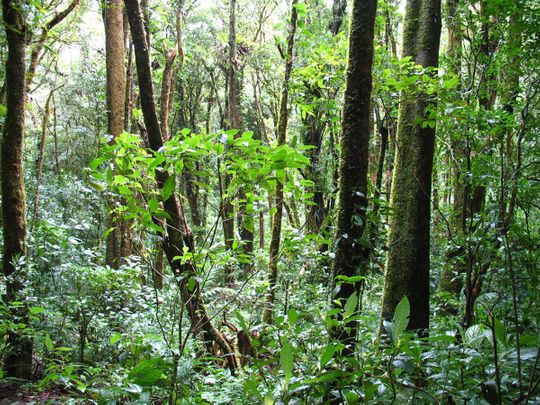
A thick canopy of trees, Mowgli, Tarzan, dappled sunlight, chirps and roars… what do you think of, when you hear the word ‘jungle’?
Click start to play today’s Word Search, where you can find a number of natural geographical features.
The word jungle originates from the Sanskrit “jangala”, meaning rough and arid. However, these lush forests are anything but that.
According to the 2019 David Attenborough-voiced documentary Our Planet, along with rainforests, jungles are responsible for regulating global weather. They create clouds that reflect the sun’s heat, helping to cool our planet. The vast amounts of water that they generate are carried on air currents and dispersed around the world. And perhaps most importantly, their ability to remove carbon from the atmosphere makes them our best hope against global warming.
But if, like me, you thought rainforests and jungles are the same thing, you would be incorrect. These dense acres of trees, with tangled vegetation, are different from rainforests in one major aspect. The trees in jungles rise above thick vegetation, which hinders movement by humans and requires them to cut their way through. Whereas the understory of rainforests is typically dark because of wide tree canopies, and a lack of sunlight means less vegetation grows on forest floors, leaving it relatively clear for travellers to pass through.
Half of all the species of animals that live on land, reside in jungles. They provide a home to incredibly diverse plants and are a source of key medicines. In fact, 25 per cent of the world’s medicines come from forest plants, and nearly 90 per cent of human diseases known to medical science can be treated with prescription drugs derived from Nature, according to UK-based nonprofit Rainforest Trust.
Get inspired by Earth’s beautiful jungles in today’s Word Search. Let us know if you enjoyed it at games@gulfnews.com.





